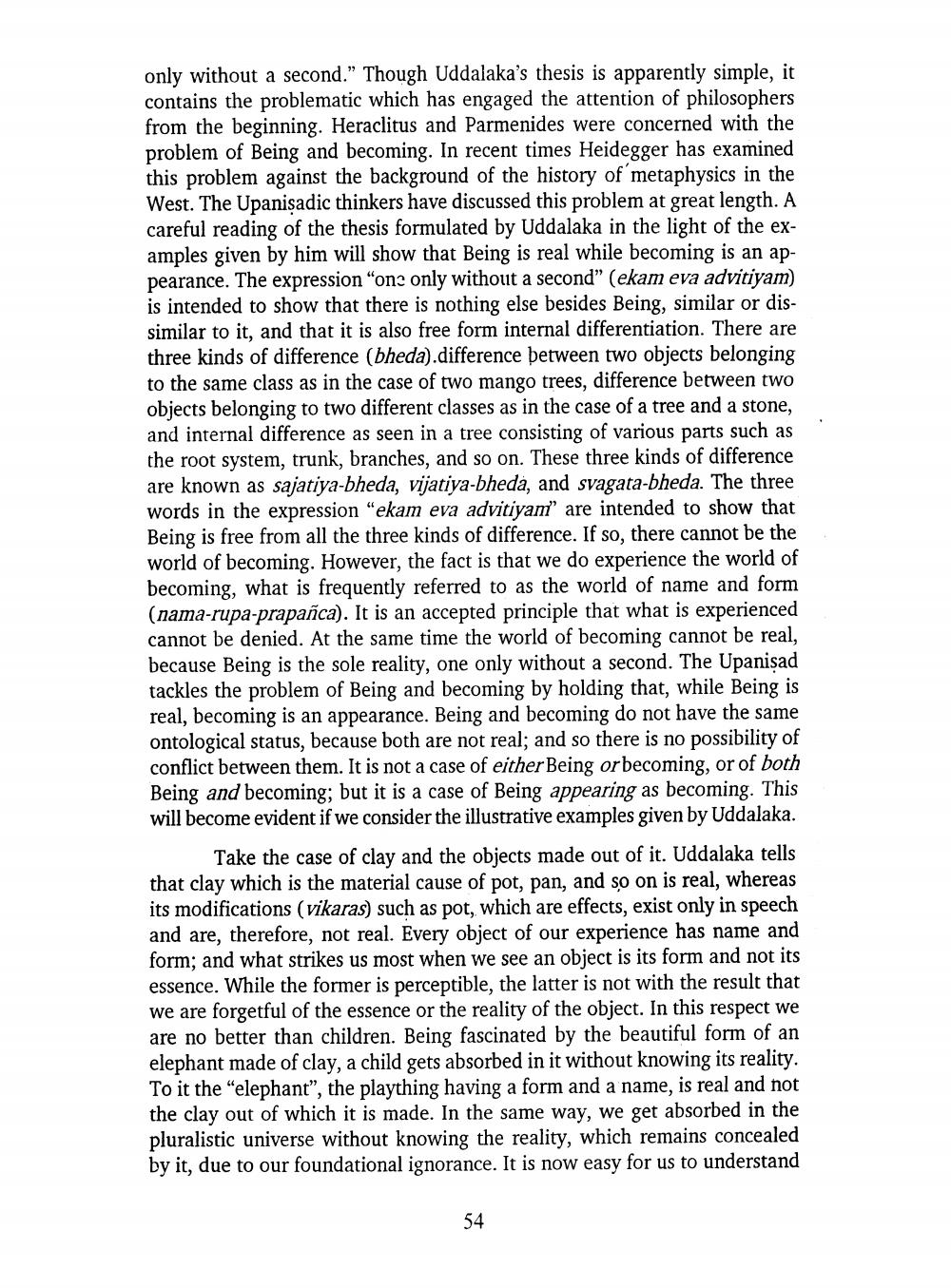________________
only without a second." Though Uddalaka's thesis is apparently simple, it contains the problematic which has engaged the attention of philosophers from the beginning. Heraclitus and Parmenides were concerned with the problem of Being and becoming. In recent times Heidegger has examined this problem against the background of the history of metaphysics in the West. The Upanisadic thinkers have discussed this problem at great length. A careful reading of the thesis formulated by Uddalaka in the light of the examples given by him will show that Being is real while becoming is an appearance. The expression "ons only without a second" (ekam eva advitiyam) is intended to show that there is nothing else besides Being, similar or dissimilar to it, and that it is also free form internal differentiation. There are three kinds of difference (bheda).difference between two objects belonging to the same class as in the case of two mango trees, difference between two objects belonging to two different classes as in the case of a tree and a stone, and internal difference as seen in a tree consisting of various parts such as the root system, trunk, branches, and so on. These three kinds of difference are known as sajatiya-bheda, vijatiya-bheda, and svagata-bheda. The three words in the expression "ekam eva advitiyam" are intended to show that Being is free from all the three kinds of difference. If so, there cannot be the world of becoming. However, the fact is that we do experience the world of becoming, what is frequently referred to as the world of name and form (nama-rupa-prapañca). It is an accepted principle that what is experienced cannot be denied. At the same time the world of becoming cannot be real, because Being is the sole reality, one only without a second. The Upanisad tackles the problem of Being and becoming by holding that, while Being is real, becoming is an appearance. Being and becoming do not have the same ontological status, because both are not real; and so there is no possibility of conflict between them. It is not a case of either Being or becoming, or of both Being and becoming; but it is a case of Being appearing as becoming. This will become evident if we consider the illustrative examples given by Uddalaka.
Take the case of clay and the objects made out of it. Uddalaka tells that clay which is the material cause of pot, pan, and so on is real, whereas its modifications (vikaras) such as pot, which are effects, exist only in speech and are, therefore, not real. Every object of our experience has name and form; and what strikes us most when we see an object is its form and not its essence. While the former is perceptible, the latter is not with the result that we are forgetful of the essence or the reality of the object. In this respect we are no better than children. Being fascinated by the beautiful form of an elephant made of clay, a child gets absorbed in it without knowing its reality. To it the "elephant", the plaything having a form and a name, is real and not the clay out of which it is made. In the same way, we get absorbed in the pluralistic universe without knowing the reality, which remains concealed by it, due to our foundational ignorance. It is now easy for us to understand
54




